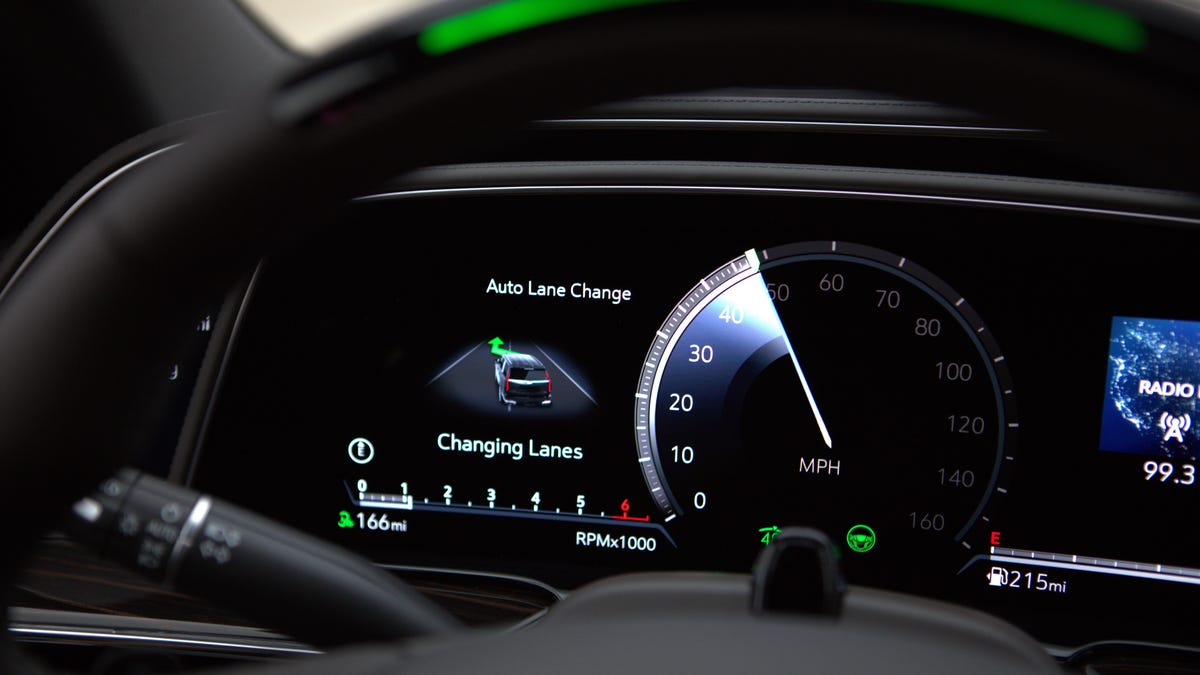Cadillac's Super Cruise outperforms Tesla's Autopilot, says Consumer Reports
It all comes down to driver attention monitoring.

Super Cruise keeps drivers honest with an infrared camera that monitors eye position.
Cadillac's Super Cruise may not get the same amount of real estate in the general public's minds when it comes to advanced driver assistance systems as, say, Tesla's Autopilot, but Consumer Reports announced some new research Wednesday that might change that.
To be honest, if you ask me, that's still probably not going to happen -- Tesla has really aced the whole marketing and branding thing -- but Consumer Reports did find Super Cruise to be appreciably better at its job than systems from Tesla, Volvo, Nissan and others. How much better? Try 12 points better than Autopilot on a 100-point scale.
Specifically, CR's research focused on situations where lane-keep assist and adaptive cruise control would be working together to control a vehicle independent of driver input. It included any company's suite of systems so long as it had both of these features, regardless of that company's claimed level of automation, which means that it tested 17 systems in total as part of this study.
What makes Super Cruise so much more effective than systems from these other manufacturers? Excellent driver attention monitoring. See, many systems rely on steering wheel torque alone to gauge driver attention, and as we've seen with products like the ill-fated Autopilot Buddy or even bottles of water and pieces of fruit, that just isn't enough.
Drivers with Autopilot can become dangerously complacent.
Super Cruise uses cameras to actively monitor the position of a driver's eyes while the system is engaged, guaranteeing that their focus is where it needs to be for safe, hands-free operation. If the system catches drivers not looking where they should be, the system will attempt to warn the driver by flashing lights on the steering wheel, among other things, and if that doesn't work, the car will start to slow and eventually stop itself. It will also call for emergency assistance.
"The evidence is clear: If a car makes it easier for people to take their attention off the road, they're going to do so -- with potentially deadly consequences," William Wallace, manager of safety policy for Consumer Reports, said in a statement. "It's critical for active driving assistance systems to come with safety features that actually verify drivers are paying attention and are ready to take action at all times. Otherwise, these systems' safety risks could end up outweighing their benefits."
One thing we've repeatedly tried to make consumers aware of in our reporting is the simple fact that, despite what vehicle manufacturers will try and tell you, there are NO true self-driving cars on sale today. Every single one of these ADAS suites can help you be a safer driver. But all of them require you to stay engaged and actively monitor the suite's performance, or it's likely to make a critical error at the worst possible time (as Tesla pointed out in its Full Self-Driving beta warning), which could leave you, your family or another motorist possibly injured or dead.

